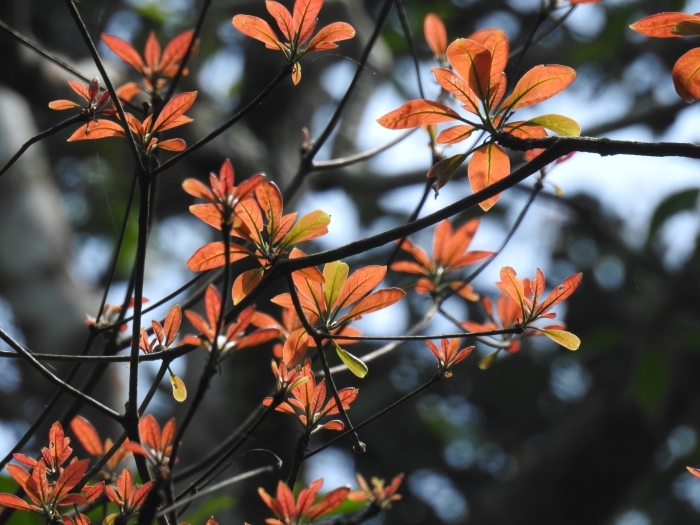Baheda
(Terminalia bellirica)
Baheda (Terminalia bellirica)
/
/

Srinivasan Kasinathan
CC BY 4.0
Image By:
Srinivasan Kasinathan
Recorded By:
Copyright:
CC BY 4.0
Copyright Notice:
Photo by: Srinivasan Kasinathan | License Type: CC BY 4.0 | License URL: http://creativecommons.org/licenses/by/4.0/ | Rights Holder: Srinivasan Kasinathan | Publisher: iNaturalist | Date Created: 2022-02-16T06:00:54Z |

























Estimated Native Range
Summary
Terminalia bellirica, commonly known as Baheda or Behada, is a large deciduous tree that is part of the Combretaceae family. It is native to the deciduous forests of South and Southeast Asia, including India, Bangladesh, Sri Lanka, Myanmar, Thailand, and Malaysia. Typically, it reaches a height of 30-50 feet (9-15 meters) with a canopy spread of 20-30 feet (6-9 meters). The tree has a straight, buttressed trunk and a rounded crown with elliptical leaves. The flowers are yellow to white, appearing in spikes during the spring season, and are not particularly showy. The fruit is a rounded drupe, yellow to brown in color when ripe, and is notable for its medicinal properties.
Baheda is valued for its shade and is often used as an avenue tree in tropical climates. It is also appreciated for its role in traditional medicine and for the high oil content of its seeds, which are explored for biodiesel production. The tree is easy to maintain, requiring minimal care once established, and can tolerate a range of soil types, though it prefers well-drained soils. It thrives in full sun to part shade. In Ayurvedic medicine, the fruit is a key component of Triphala, a herbal remedy. Despite its beneficial uses, the tree is sometimes associated with negative superstitions, such as being inhabited by demons in Northern India, which can affect its local popularity.CC BY-SA 4.0
Baheda is valued for its shade and is often used as an avenue tree in tropical climates. It is also appreciated for its role in traditional medicine and for the high oil content of its seeds, which are explored for biodiesel production. The tree is easy to maintain, requiring minimal care once established, and can tolerate a range of soil types, though it prefers well-drained soils. It thrives in full sun to part shade. In Ayurvedic medicine, the fruit is a key component of Triphala, a herbal remedy. Despite its beneficial uses, the tree is sometimes associated with negative superstitions, such as being inhabited by demons in Northern India, which can affect its local popularity.CC BY-SA 4.0
Plant Description
- Plant Type: Tree
- Height: 15-30 feet
- Width: 20-30 feet
- Growth Rate: Moderate
- Flower Color: White, Yellow
- Flowering Season: Spring
- Leaf Retention: Deciduous
Growth Requirements
- Sun: Full Sun
- Water: Medium
- Drainage: Medium, Fast
Common Uses
Low Maintenance
Natural Habitat
Deciduous forests of South and Southeast Asia
Other Names
Common Names: Baheda, Bastard Myrobalan, Beach-Almond, Beleric Myrobalan, Belleric, Belleric Myrobalan, Bibhitaki, Beleric
Scientific Names: , Terminalia bellirica, Buceras bellirica, Myrobalanus bellirica, Myrobalanus laurinoides, Myrobalanus punctata, Myrobalanus tania, Myrobalanus tania, Myrobalanus taria, Terminalia attenuata
GBIF Accepted Name: